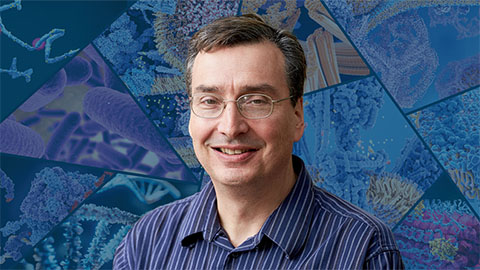Cell biology

The science of staying strong
Muscles power every movement, but they also tell the story of aging itself. Scientists are uncovering how strength fades, why some species resist it and what lifestyle and molecular clues could help preserve muscle health for life.

Building the blueprint to block HIV
Wesley Sundquist will present his work on the HIV capsid and revolutionary drug, Lenacapavir, at the ASBMB Annual Meeting, March 7–10, in Maryland.

Gut microbes hijack cancer pathway in high-fat diets
Researchers at the Feinstein Institutes for Medical Research found that a high-fat diet increases ammonia-producing bacteria in the gut microbiome of mice, which in turn disrupts TGF-β signaling and promotes colorectal cancer.

Mapping fentanyl’s cellular footprint
Using a new imaging method, researchers at State University of New York at Buffalo traced fentanyl’s effects inside brain immune cells, revealing how the drug alters lipid droplets, pointing to new paths for addiction diagnostics.

How lipid metabolism shapes sperm development
Researchers at Hokkaido University identify the enzyme behind a key lipid in sperm development. The findings reveal how seminolipids shape sperm formation and may inform future diagnostics and treatments for male infertility.

Discoveries made possible by DNA
The discovery of DNA’s double helix revealed how genetic information is stored, copied and expressed. Revisit that breakthrough and traces how it laid the foundation for modern molecular biology, genomics and biotechnology.

Unraveling the language of histones
Philip Cole presented his research on how posttranslational modifications to histones are involved in gene expression and how these modifications could be therapeutically targeted to treat diseases like cancer.

Extracellular vesicles offer clues to cattle reproduction
Extracellular vesicles from pregnant cattle support embryo development better than laboratory models, highlighting their potential to improve reproductive efficiency in bovine embryo cultures. Read more about this recent MCP paper.

Proteomics reveals protein shifts in diabetic eye disease
Using proteomics, researchers identified protein changes in eye fluid that mark diabetic retinopathy progression and may serve as biomarkers for vision-threatening complications. Read more about this recent MCP paper.
